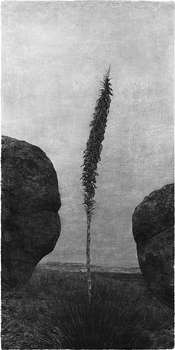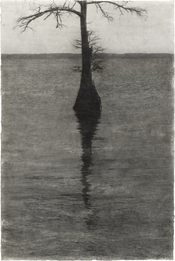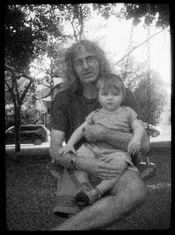blacksquare
Member
Hello,
I need some technique to get closer to the look of a charcoal drawing.
A friend of mine will be exhibiting his realistic charcoal drawings and we would like to complement it with some of my prints and ideally match the look a bit.
My negatives are mostly 5x7 Fomapan 100, there is also something about the format. The ones from VF are logically very "clean" and smooth. So I would mainly like to add some texture to larger areas, such as the sky, water surface etc .
As a reference, I am attaching 3 photos from photographer Jungjin Lee:



What I know is that she used rice paper, onto which she applied photographic emulsion with a brush, so the texture of the paper and the brush strokes are visible.
I don't know how difficult it is to work with liquid emulsion. Both technically and financially (how much emulsion is needed for one 30x40cm (12x16 inch) paper). I'm from the Czech Republic, so I would reach for the Foma emulsion.
Before I try something like that, can you think of an alternative? Maybe some kind of contact process like toned cyanotype? 5x7 contacts would probably be feasible, for medium format I would have to go the route of some kind of internegative/interpositive. I have tried Kallitype a few times in the past, I don't have much experience here.
Thank you very much for your ideas.
Jan
I need some technique to get closer to the look of a charcoal drawing.
A friend of mine will be exhibiting his realistic charcoal drawings and we would like to complement it with some of my prints and ideally match the look a bit.
My negatives are mostly 5x7 Fomapan 100, there is also something about the format. The ones from VF are logically very "clean" and smooth. So I would mainly like to add some texture to larger areas, such as the sky, water surface etc .
As a reference, I am attaching 3 photos from photographer Jungjin Lee:



What I know is that she used rice paper, onto which she applied photographic emulsion with a brush, so the texture of the paper and the brush strokes are visible.
I don't know how difficult it is to work with liquid emulsion. Both technically and financially (how much emulsion is needed for one 30x40cm (12x16 inch) paper). I'm from the Czech Republic, so I would reach for the Foma emulsion.
Before I try something like that, can you think of an alternative? Maybe some kind of contact process like toned cyanotype? 5x7 contacts would probably be feasible, for medium format I would have to go the route of some kind of internegative/interpositive. I have tried Kallitype a few times in the past, I don't have much experience here.
Thank you very much for your ideas.
Jan













